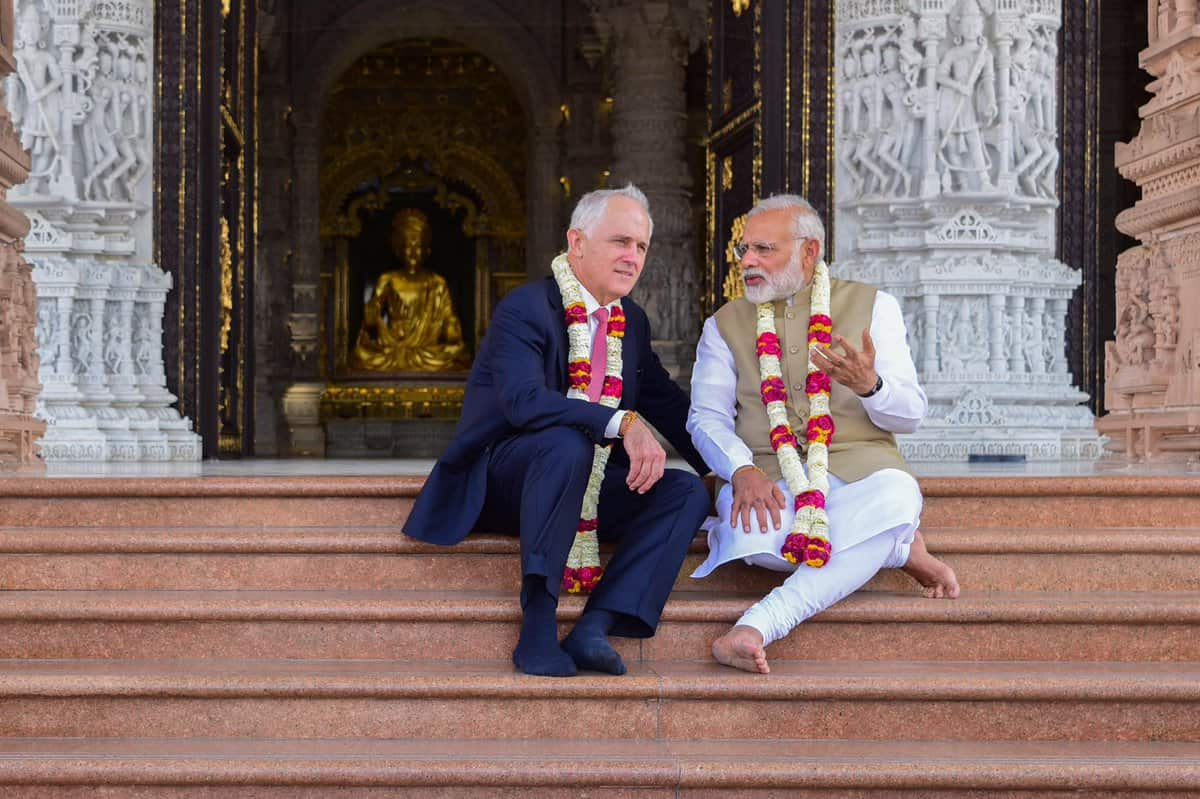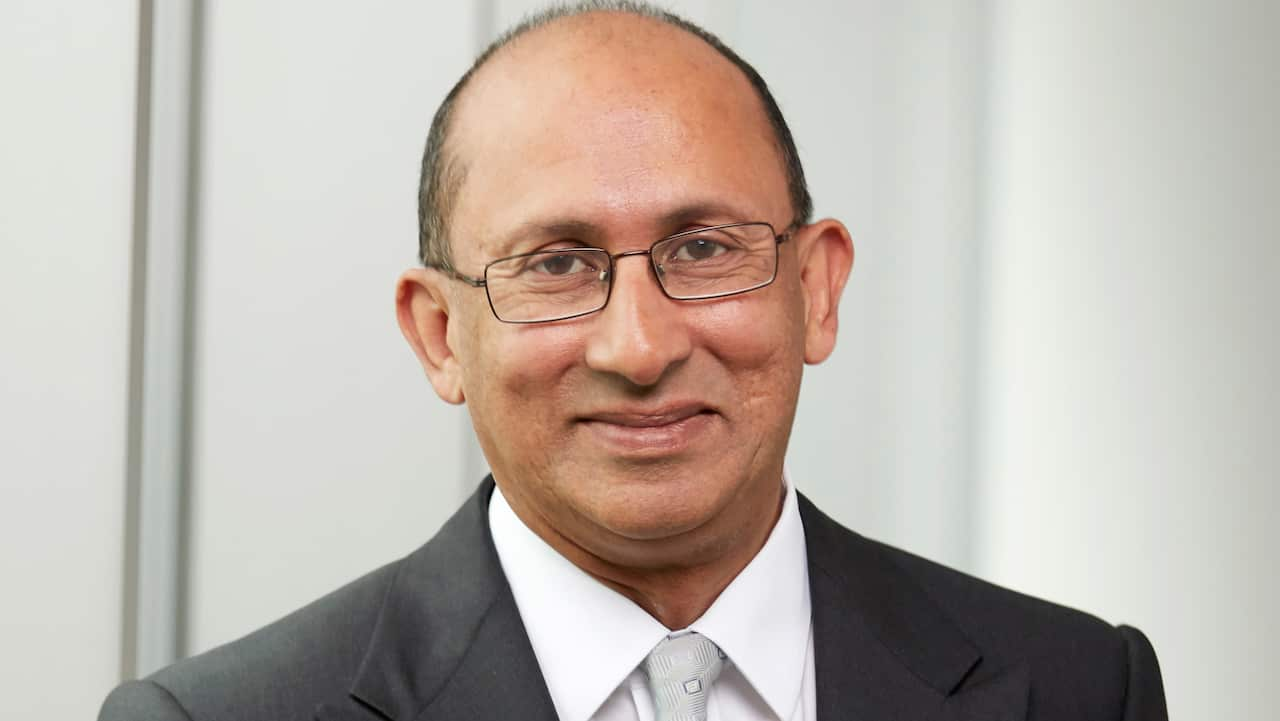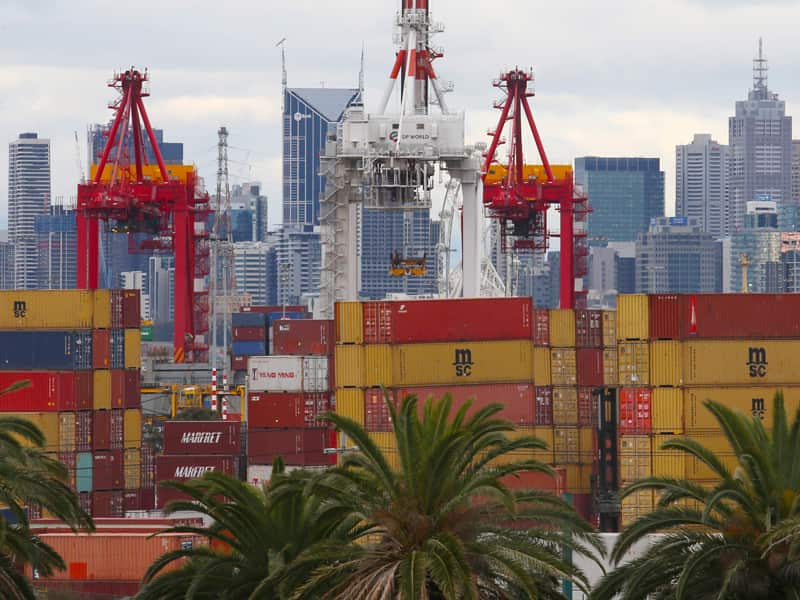Australia has set a goal and is moving ahead with a strategy.
This strategy has been prepared by Mr Peter Vaghese, Chancellor of the University of Queensland who served as the High Commissioner to India (2009-12).
Mr Vaghese told SBS Hindi that his strategy is a long-term analysis of Australia and India from an economic point of view.

Prime Minister Malcolm Turnbull with Indian Prime Minister Narendra Modi. Source: MEA, India
"The core feature of this analysis is that we can expect India which is already the third largest economy measured by purchasing power parity to grow conservatively between 6 and 8 per cent over the next twenty years," he said.
"And that creates quite an extraordinary opportunity for Australia and India on the economic side."
The critical feature is a focus on selected sectors and selected states in India.
Mr Vaghese pointed to 10 sectors where Australia has a measure of competitive advantage in the Indian market.
"It makes the point that India is more a collection of states that it is a single national economy. So the report also identifies 10 states in which Australia ought to focus. So the other key elements of the strategy are the more active role of the active role of the India diaspora in Australia in building up the economic relationship.
'The critical feature is a focus on selected sectors and selected states in India.'
And the third pillar is the relationship in which a growing geo-strategic congruence is. So the economy is pillar number one. The diaspora is pillar number two, and geopolitical convergence is pillar number three," said Mr Varghese. The choice of 10 states was based on various factors such as the size of state economies or the commitment towards economic reforms.
The choice of 10 states was based on various factors such as the size of state economies or the commitment towards economic reforms.

Mr Peter Varghese Source: Supplied
“We looked at the number of criteria. We looked at the size of the state economies. We looked at how externally integrated they were in terms of import-exports and investment. We looked at how committed they were to economic reforms, and we looked at their rates of investment in areas like health and education which is important to productivity. And then we also looked at the scale.”
“So it’s a combination to all of those factors but ultimately a fairly selective judgement,” Mr Vaghese explained. However, his strategy is based on a key assumption that India will behave in a particular manner over the coming years.
However, his strategy is based on a key assumption that India will behave in a particular manner over the coming years.

Australia will ship more resources overseas over the next two years. (AAP) Source: AAP
Others are not quite so sure.
Dr Alexander Davis, who's PhD focused on India's relationship with the English-speaking world, thinks that the Varghese report misses some crucial points in Indian foreign policy discourse “in which they really don’t see international politics the same way as Australia, and they don't want the same thing as Australia wants.”
“In terms of Geo-politics, he has a very rosy picture of India-Australia relations most Australian foreign policy elites have tended to have over a really long period of time. I think the problem with the geo-political chapter is that it assumes that India and Australia will come to see international affairs, broadly defined world order and the rise of China in the same way because they are both democracies and they are likely to continue trading with one another as his strategy maps out.” Mr Varghese defends his strategy as the report that focuses on the need “for both sides really to have a much deeper and much more contemporary understanding of the economic opportunities between the two countries.”
Mr Varghese defends his strategy as the report that focuses on the need “for both sides really to have a much deeper and much more contemporary understanding of the economic opportunities between the two countries.”

Dr Alexander Davis, NGN Research Scholar at The La Trobe University Source: Supplied
“So that means Australian business community, in particular, is having a more up to date understanding of what’s happening in India. But it also means India seeking to be more ambitious in its economic links with Australia,” says Mr Varghese.
Share
